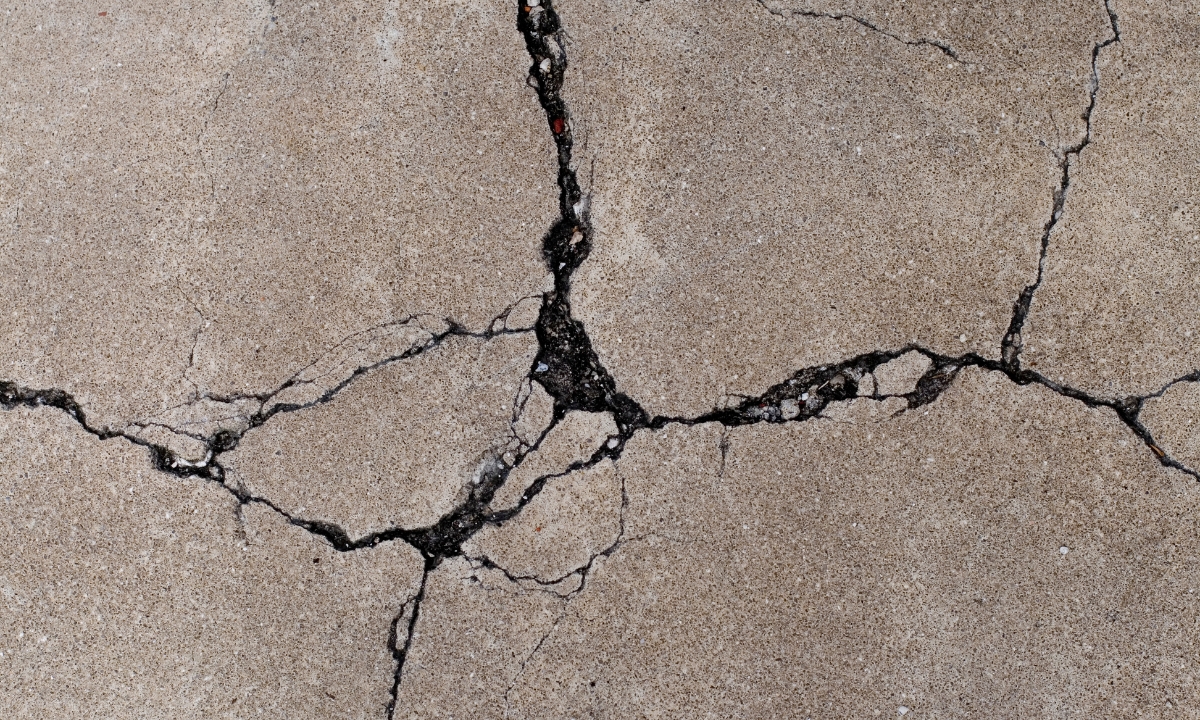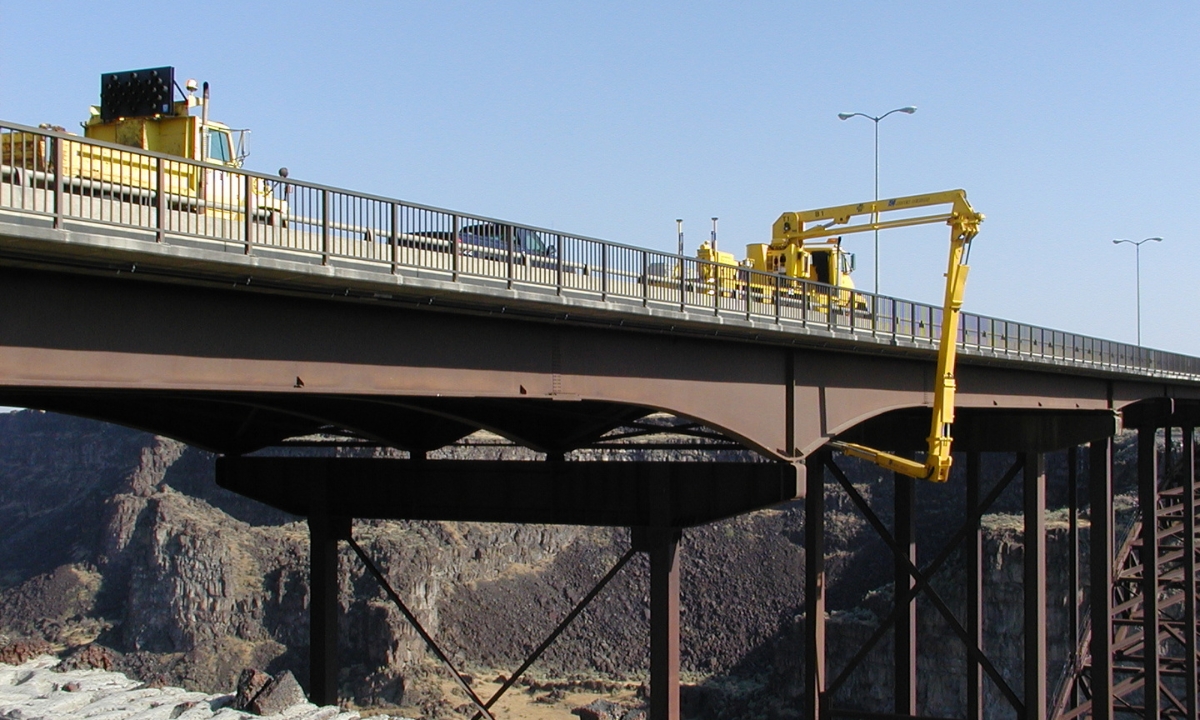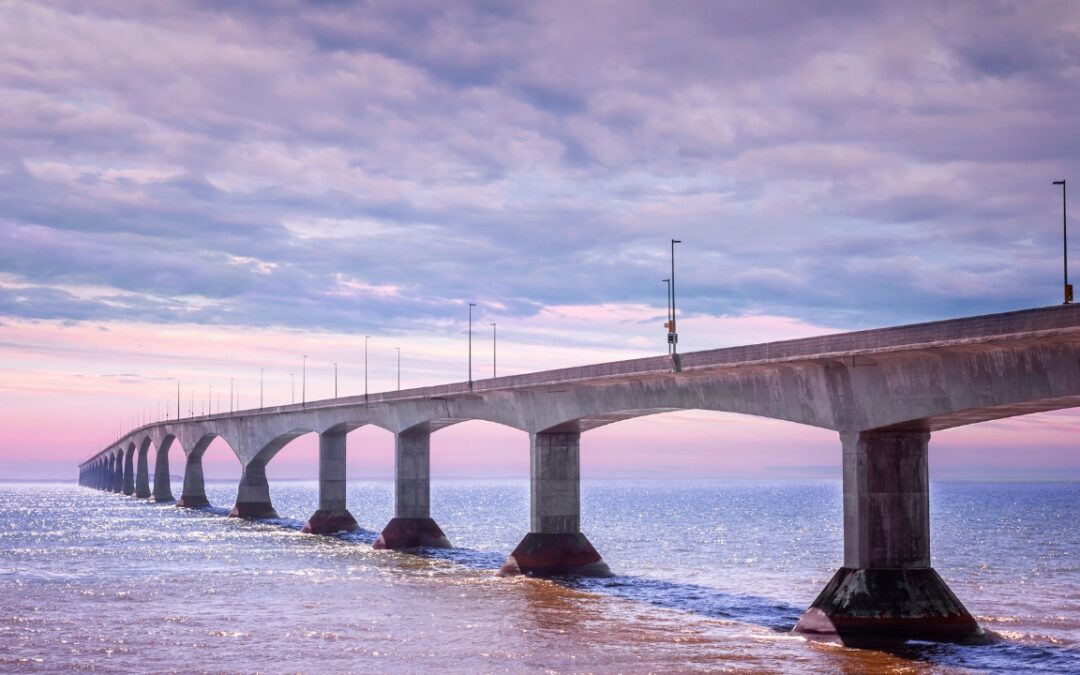Bridges are critical components of our transportation infrastructure, components that support our daily lives. They connect communities and facilitate the movement of people and goods. However, like any man-made structure, bridges are subject to wear and tear over time. Environmental factors, traffic loads, and material aging can contribute to various types of defects that, if left unaddressed, may compromise the structural integrity and safety of the bridge.
Which is why ensuring their safety and longevity is paramount.
Identifying and addressing common defects promptly is essential to maintaining their safety. And early detection of these defects are critical for preventing costly repairs and ensuring the longevity of these essential assets. In this article, we’ll explore some of the most common bridge defects and provide guidance on how to recognize them.

Cracks in Concrete and Steel Components
Causes:
Cracks in bridges are one of the most prevalent defects and can develop in both concrete and steel components. They can occur in various forms, including longitudinal cracks, transverse cracks, and diagonal cracks. Concrete cracks often occur due to shrinkage, thermal changes, corrosion of reinforcement, or excessive loading. Steel structures may experience cracks due to fatigue, corrosion, or welding defects. The severity of cracks depends on their size, location, and orientation. Some cracks may be merely cosmetic, while others may indicate significant structural damage.
How to Identify:
- Visual Inspection: Surface cracks in concrete can be visually inspected, and their depth and width can be measured using specialized tools like crack gauges. Use binoculars to inspect hard-to-reach areas, such as the undersides of beams and girders.
- Non-Destructive Testing (NDT): Methods like ultrasonic testing, magnetic particle inspection, or dye penetrant testing can help detect hidden cracks in steel components, especially those caused by fatigue.
- Crack Monitoring: Instruments like crack monitors can be installed to track the progression of cracks over time, ensuring that maintenance teams can address them before they become critical.
Corrosion of Steel Components
Causes:
Corrosion is a major issue for steel bridges, especially in regions exposed to moisture, saltwater, or de-icing chemicals. Corrosion is the deterioration of materials due to chemical or electrochemical reactions. It weakens steel members, reduces cross-sectional area, and compromises the load-bearing capacity of the structure. Over time, this can lead to severe structural problems and costly repairs. If left unchecked, it can lead to failure.
How to Identify:
- Rust Stains and Surface Pitting: Rust stains or pitting on the surface of steel components are clear indicators of corrosion. These are often visible during routine inspections.
- Ultrasonic Thickness Testing: This method can measure the remaining thickness of steel members, helping to identify sections that have experienced significant corrosion.
- Probe with a Hammer: Gently tap different parts of the bridge to check for hollow sounds, which may indicate corroded areas
- Detailed Visual Inspection: During regular inspections, inspectors can check for flaking, rust scale, and other signs of deterioration. Pay special attention to areas near joints, bolts, and other connections, as these are prone to corrosion.
Spalling of Concrete
Causes:
Concrete spalling occurs when chunks or layers of concrete break off the surface, usually due to corrosion of embedded steel reinforcement. Spalling is the detachment of concrete from the underlying reinforcement. It can be caused by factors such as freeze-thaw cycles, exposure to de-icing salts, or inadequate curing. This also happens when moisture infiltrates the concrete, leading to rusting of the steel, which expands and cracks the surrounding concrete. Spalling can compromise the structural integrity of the bridge and may lead to further deterioration.
How to Identify:
- Surface Deterioration: Visual inspection will reveal areas where the concrete has flaked or broken off, leaving rough or exposed surfaces. Spalling often occurs near abutments and piers.
- Sounding Test: Tapping the concrete surface with a hammer can help detect hollow or delaminated areas where spalling may soon occur. A dull or hollow sound typically indicates internal damage.
- Exposed Rebar: If spalling has progressed, exposed steel reinforcement will be visible, often showing signs of rust and corrosion.
Scour, Erosion and Settlement
Causes:
Scour, also known as undermining, refers to the removal of sediment around bridge foundations due to fast-moving water, scour, or other factors which can undermine the stability of the bridge piers and abutments. Erosion, a similar process, occurs more gradually and affects the bridge’s supporting soil or sediment over time. Settlement occurs when a bridge’s foundation sinks or shifts, causing uneven support.
How to Identify:
- Depth Sounding: Using sonar or other depth measurement tools, inspectors can measure the depth of the riverbed or streambed around bridge piers to detect areas where scour has occurred.
- Look for Tilting Piers: Uneven piers or abutments suggest settlement.
- Inspect Bearings: Damaged bearings may indicate movement.
- Visual Changes in Soil Levels: Lowering soil or sediment levels around the base of piers or abutments can often be seen visually, especially after flooding or periods of heavy rain.
- Underwater Inspection: Divers or remotely operated vehicles (ROVs) can conduct detailed inspections of underwater bridge foundations to identify scour and erosion.
Fatigue in Steel Members
Causes:
Fatigue occurs in steel components due to repeated cycles of stress, which can lead to the formation of small cracks that grow over time. This is common in bridges that experience heavy and frequent traffic loads, especially those involving trucks or trains. Fatigue can lead to unexpected failures, even in seemingly sound structures.
How to Identify:
- Non-Destructive Testing (NDT): Techniques like ultrasonic testing, magnetic particle inspection, acoustic emission monitoring, or radiography can detect early signs of fatigue cracking in steel members.
- Visual Inspection: Inspectors should focus on welds, joints, and areas with high-stress concentrations. Fatigue cracks may appear as tiny, hairline fractures at these locations.
- Strain Gauging: Strain gauges can be installed on critical steel members to measure and monitor stress cycles and detect early fatigue damage before it becomes visible.
Deck Deterioration
Causes:
Bridge decks, or the road surface, especially those made of concrete, are susceptible to damage from traffic loads, freeze-thaw cycles, and water infiltration. Over time, this can result in cracking, surface wear, and the degradation of the protective coating. This deterioration affects its functionality and safety.
How to Identify:
- Surface Wear and Cracks: Visual inspection can reveal surface cracking, potholes, or worn-out areas on the bridge deck.
- Check Expansion Joints: Damaged expansion joints can lead to deck deterioration.
- Assess Skid Resistance: A slippery deck may indicate surface wear.
- Deflection Measurements: Excessive deflection of the deck under load can indicate structural weakening. Laser scanning or other deflection monitoring tools can be used to measure how much the deck flexes when vehicles pass over it.
- Core Sampling: Taking core samples of the deck can help identify deeper structural damage or deterioration of the concrete beneath the surface.
Joint Deterioration and Failures
Causes:
Expansion joints allow bridges to accommodate temperature changes by expanding and contracting without causing structural damage. Over time, these joints can wear out, leading to water infiltration, material degradation, and joint failure. Joint deterioration can compromise the bridge’s structural stability and may lead to safety hazards.
How to Identify:
- Water Leakage: Water leaking through the joints is a sign of sealant failure, which can lead to further deterioration of the joint and underlying components.
- Excessive Movement or Misalignment: If the joint is no longer functioning as designed, there may be visible gaps, misalignment, or excessive movement between bridge segments.
- Noise and Vibration: Unusual noise or vibrations when vehicles pass over the joints can indicate a failure in the joint’s integrity.
Bearing Wear and Deterioration
Causes:
Bearings allow a bridge to move with thermal expansion and contraction, as well as to adjust to dynamic loads. Over time, these components can wear down or become misaligned due to corrosion, debris buildup, or inadequate maintenance.
How to Identify:
- Visual Inspection: Inspectors can look for corrosion, debris buildup, or any visible signs of wear and tear on the bearing components.
- Movement Restrictions: If the bearing has deteriorated or seized, the bridge may experience restricted movement, leading to cracking or other structural damage. This can be identified by measuring the movement of the bridge deck and checking for signs of stress in the surrounding areas.
- Debris or Rust Accumulation: Rust, dirt, or debris around bearings can indicate a lack of lubrication or maintenance, potentially leading to mechanical failure.
Efflorescence
Causes:
Efflorescence is the formation of white, powdery deposits on concrete surfaces. It is caused by the migration of salts to the surface. While efflorescence is generally not a structural concern, it can be unsightly and may indicate moisture problems within the concrete.
How to identify:
- Visual Detection: Efflorescence appears as white or light-colored patches on the concrete.

Regular Inspections and Maintenance
Regular inspections are essential for identifying and addressing bridge defects before they escalate into serious problems. A comprehensive inspection program should include visual inspections, as well as advanced techniques such as ultrasonic testing, magnetic particle testing, and ground-penetrating radar.
In addition to regular inspections by qualified engineers and bridge inspectors, timely maintenance and repairs help ensure the safety and reliability of our bridges. A well-maintained bridge contributes to safer travel and a more efficient transportation network, and regular maintenance is crucial for preserving the integrity of bridges. This includes tasks such as cleaning, painting, repairing cracks, and replacing damaged components.
An Ounce of Prevention Really Matters for Highway Bridges
Bridge defects can develop slowly over time due to a variety of environmental, mechanical, and structural factors. By understanding the common types of defects—such as cracking, corrosion, spalling, fatigue, and scour—maintenance teams can prioritize regular inspections and employ non-destructive testing methods to detect problems early.
In addition, early identification of these issues allows for timely repairs, reducing the risk of serious structural failures and prolonging the lifespan of the bridge. By implementing effective inspection and maintenance programs, we can ensure the safety and longevity of our critical infrastructure. Ultimately, proactive maintenance supported by consistent inspections is key to preserving these critical infrastructure assets for generations to come.
Your Partners in Bridge Inspection, Maintenance, and Repair: Under Bridge Platforms
Under Bridge Platforms serves all of the Western States, including California, Washington, Oregon, Idaho, Nevada, Montana, and Wyoming to provide quality under bridge equipment.
Our large and expanding inventory of under bridge access platforms includes state-of-the-art self-drive access platforms such as the versatile Truck Mounted Hydra Platform HPT43 and the Aspen Aerials A-30 Bridge Inspection Unit.
With a professional firm you can rely on to guide you through the process, buying or renting the right under bridge inspection vehicle and bridge inspection platform equipment for your project means we are here to help you make the proper selection.
We take a great deal of pride in being the only company in our industry based in California that offers total under bridge access. By offering high quality customer service, we have managed to build long-lasting relationships with our esteemed customers. And we intend to keep it that way.
Contact us today and let us help take care of all your under bridge platform needs.


Recent Comments